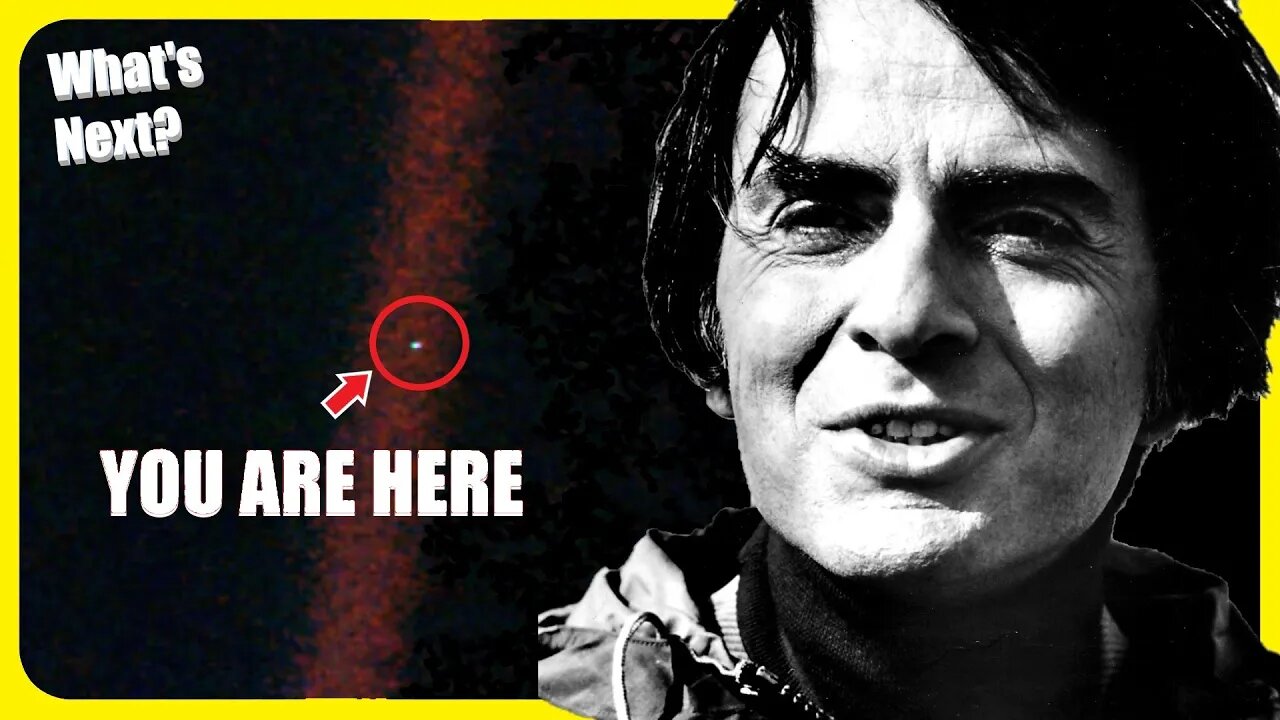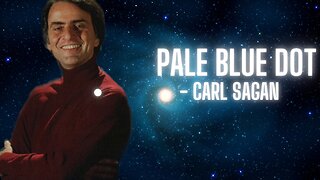Premium Only Content

Carl Sagan - Pale Blue Dot - A Lesson In Humility
Patreon - https://www.patreon.com/user?u=37594401
Buy Me A Coffee? - https://www.buymeacoffee.com/whats.next
Donate With Cash App - https://cash.app/$YTpayments
Get Mentioned In Future Videos By Joining PATREON For As Little As $5 A Month
(and gain access to DOZENS of videos!)
Support Direct Improvements To The Channel With BUY ME A COFFEE
Or Make Direct Contributions With No Strings Attached With CASH APP
WANT MORE GREAT CONTENT?
SUBSCRIBE 2 THESE GREAT CHANNELS!
Vega Astro - https://www.youtube.com/channel/UCejLQCRfKR1XAmDeRRv3ifA
Terran Space Academy - https://www.youtube.com/channel/UCGzgxO2YKjk9yYKLwBjyeVA
Mars Matters - https://www.youtube.com/channel/UCPFLOxf5-AgE0QlaXhzol_Q
“From this distant vantage point, the Earth might not seem of particular interest. But for us, it's different. Consider again that dot. That's here, that's home, that's us. On it everyone you love, everyone you know, everyone you ever heard of, every human being who ever was, lived out their lives. The aggregate of our joy and suffering, thousands of confident religions, ideologies, and economic doctrines, every hunter and forager, every hero and coward, every creator and destroyer of civilization, every king and peasant, every young couple in love, every mother and father, hopeful child, inventor and explorer, every teacher of morals, every corrupt politician, every "superstar," every "supreme leader," every saint and sinner in the history of our species lived there – on a mote of dust suspended in a sunbeam."
Pale Blue Dot is a photograph of planet Earth taken on February 14, 1990, by the Voyager 1 space probe from a record distance of about 6 billion kilometers (3.7 billion miles, 40.5 AU), as part of that day's Family Portrait series of images of the Solar System.
In the photograph, Earth's apparent size is less than a pixel; the planet appears as a tiny dot against the vastness of space, among bands of sunlight reflected by the camera.
Voyager 1, which had completed its primary mission and was leaving the Solar System, was commanded by NASA to turn its camera around and take one last photograph of Earth across a great expanse of space, at the request of astronomer and author Carl Sagan. The phrase "Pale Blue Dot" was coined by Sagan in his reflections on the photograph's significance, documented in his 1994 book of the same name.
In September 1977, NASA launched Voyager 1, a 722-kilogram (1,592 lb) robotic spacecraft on a mission to study the outer Solar System and eventually interstellar space. After the encounter with the Jovian system in 1979 and the Saturnian system in 1980, the primary mission was declared complete in November of the same year. Voyager 1 was the first space probe to provide detailed images of the two largest planets and their major moons.
A space probe resting on a stand, with a parabolic antenna pointing upwards and two arms extending from the sides, bearing cameras and other devices, against a black background curtain
The Voyager 1 spacecraft
The spacecraft, still travelling at 64,000 km/h (40,000 mph), is the most distant human-made object from Earth and the first one to leave the Solar System.[5] Its mission has been extended and continues to this day, with the aim of investigating the boundaries of the Solar System, including the Kuiper belt, the heliosphere and interstellar space. Operating for 45 years, 5 months and 20 days as of 25 February 2023, it receives routine commands and transmits data back to the Deep Space Network.
Voyager 1 was expected to work only through the Saturn encounter. When the spacecraft passed the planet in 1980, Sagan proposed the idea of the space probe taking one last picture of Earth. He acknowledged that such a picture would not have had much scientific value, as the Earth would appear too small for Voyager's cameras to make out any detail, but it would be meaningful as a perspective on humanity's place in the universe.
Although many in NASA's Voyager program were supportive of the idea, there were concerns that taking a picture of Earth so close to the Sun risked damaging the spacecraft's imaging system irreparably. It was not until 1989 that Sagan's idea was put in motion, but then instrument calibrations delayed the operation further, and the personnel who devised and transmitted the radio commands to Voyager 1 were also being laid off or transferred to other projects. Finally, NASA Administrator Richard Truly interceded to ensure that the photograph was taken. A proposal to continue to photograph Earth as it orbited the Sun was rejected.
-
 3:40
3:40
True Meaning
1 year agoPale Blue Dot - A Profound Speech by Carl Sagan
1121 -
 3:28
3:28
DOCSANDCLIPS
2 years agoPale Blue Dot: A Vision of the Human Future in Space by Carl Sagan, Backed by Music.
7 -
 22:17
22:17
Macs guitar tips
2 years agolimp bizkit-behind blue eyes-guitar lesson
8 -
 2:09
2:09
LibertyPen
2 years agoCarl Sagan - Science and Skepticism
421 -
 LIVE
LIVE
Russell Brand
33 minutes agoTrump’s Deportation Wave Begins – SF527
4,980 watching -
 LIVE
LIVE
The Charlie Kirk Show
21 minutes agoThe Big Pause + ICE in Chicago + The Birthright Citizenship Scam | Glenn, Hammer, Eastman | 1.28.25
6,488 watching -
 59:20
59:20
The Dan Bongino Show
3 hours agoTrump Has Begun His Total Personnel Warfare (Ep. 2410) - 01/28/2025
209K494 -
 48:35
48:35
Russell Brand
2 hours agoBREAK BREAD EP. 12 - PAUL KINGSNORTH
29.3K2 -
 LIVE
LIVE
Grant Stinchfield
37 minutes agoSources Inside the CIA: COVID, "It's a Deliberate Bio-Weapon!"
104 watching -
 LIVE
LIVE
Bare Knuckle Fighting Championship
1 day agoThe Bare Knuckle Show with Brian Soscia
37 watching